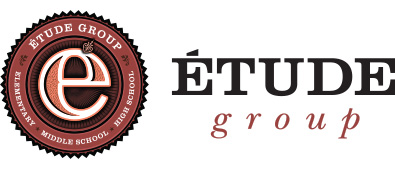This blog is part of a monthly series titled ReBlog sharing out articles that speak to the work we are doing in the schools of The Étude Group. Through these reblogs, we want to connect the work being done here in Sheboygan to the national conversation about education.
As a parent, how do you judge whether your school is meeting the needs of your child? Grades and graduation are important, but most parents consider a range of things according to Jack Schneider, a researcher at Harvard’s Graduate School of Education and author of this blog post about What Makes a Great School. In asking parents about what they look for in a school: “Chances are, they’ll say something about the impact a school makes on the young people who attend it. Do students feel safe and cared for? Are they being challenged? Do they have opportunities to play and create? Are they happy?” Often, school rankings don’t capture the full range of what makes a school or its students successful.
During the month of November the annual School Report Cards are released from the Department of Public Instruction. The annual School Report Card tries to distill a school’s performance down to a single number based on a 100 point scale. It consists of ratings on standardized tests, attendance rates, and graduation rates with a major emphasis on the ACT scores in Math and Reading. For smaller schools, the single number often comes down to the ACT because smaller schools, such as Étude High, do not have a large enough population for additional measures to be statistically significant. As an example, in Wisconsin, the high school accountability comes down to high stakes results from the ACT, at a time when college success indicators are moving far beyond GPA and test scores. For larger schools the number is also based on the performance of subgroups of minorities and lower socioeconomic groups. For smaller schools, these subgroups are too small and the overall performance score defaults back to the ACT scores in math and reading and the graduation rate.
In reality, measuring the success of students and the performance of the schools they attend is much more complex. Jack, says in his blog post and writes: “School quality is multidimensional. And just because a school is strong in one area does not mean that it is equally strong in another. In fact, my research team has found that high standardized test score growth can be correlated with low levels of student engagement. Standardized tests, in short, tell us very little about what we actually value in schools. One consequence of such limited and distorting data is an impoverished public conversation about school quality.” This gets to the core of the issue, standardized tests do not measure the totality of what a school does, much less measure its quality.
Like the author, we at Étude have decided to measure a wider range of student achievement so that we can deliver on our values of Empowerment, Community, Authentic Learning and Intelligence. Over the last few years, we have added methods to measure what we value using the CWRA+ (College Work Readiness Assessment + Writing) as well as the Youth Truth Survey. These two measures coupled with College Clearinghouse data, attendance data and the classroom based evidence of learning that give us a composite view of our schools and where we need to focus our improvement efforts. These measures help us take a view of student engagement, school culture, a broad view of academic achievement and college persistence. Based on this data, we can make meaningful decisions about our school that help us prepare our students to be our future changemakers..
I invite you to read Jack’s blog over and see how he looks at school quality and the coalition he has created to redefine how we measure school quality. The Massachusetts Consortium for Innovative Education Assessment provides a great model for us at Étude and here in Wisconsin on how we can truly come to a better method for looking at school quality.

